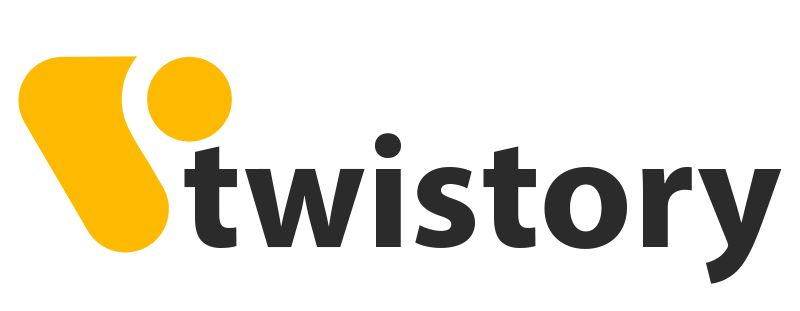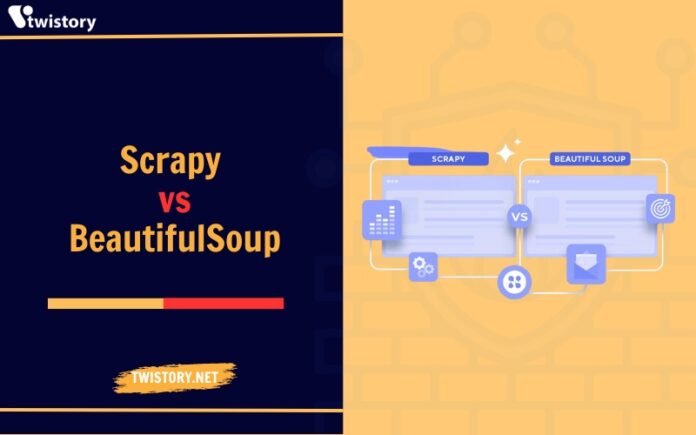Web scraping is a fascinating area that both beginners and experienced developers find challenging at times. The key to mastering it lies in choosing the right tools, and avoiding those that are unreliable or a poor fit for your needs.
Today, we will learn the comparative analysis of two popular web scraping tools: Scrapy vs BeautifulSoup. This discussion aims to shed light on their functionalities, strengths, and weaknesses. Additionally, we’ll provide practical insights on selecting the appropriate tool for specific web scraping scenarios.
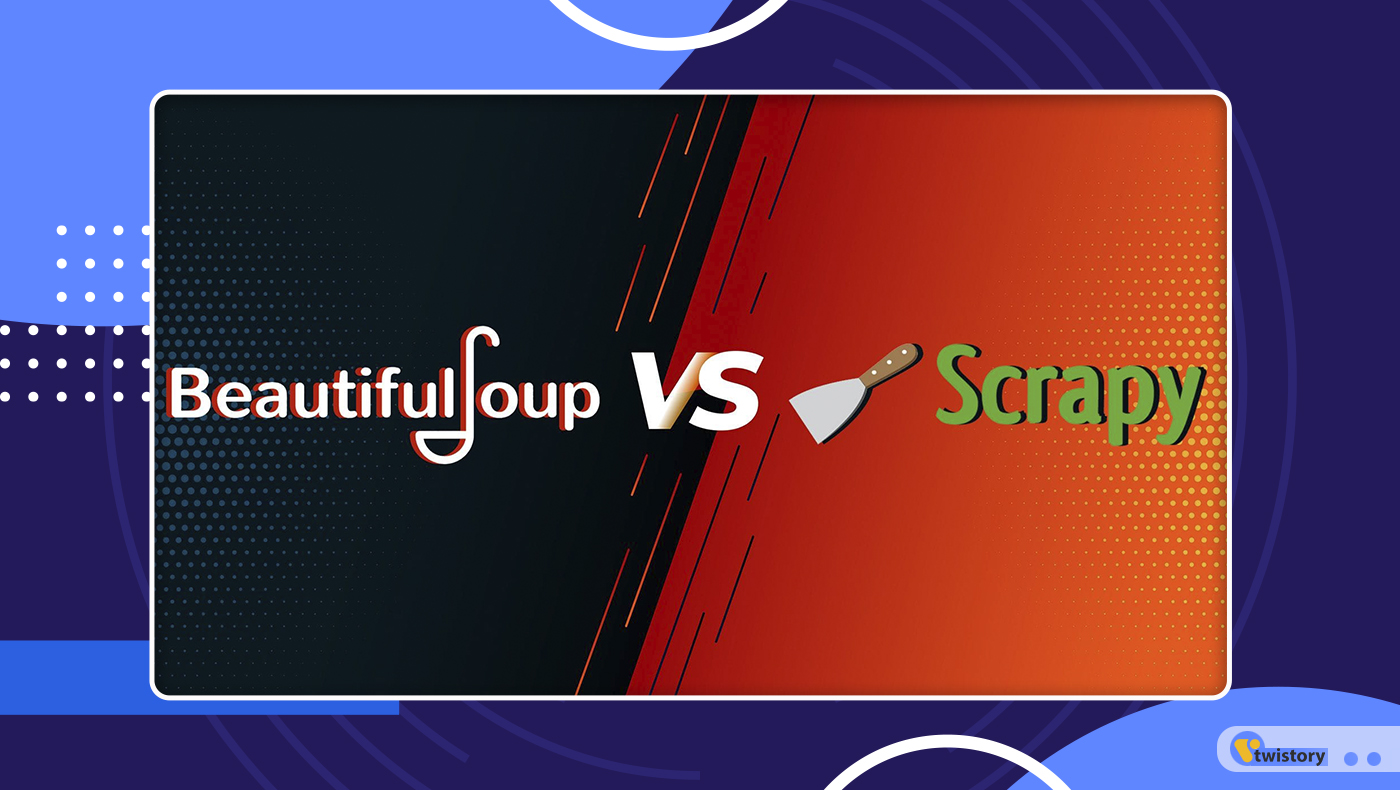
1. What Is Scrapy?
Scrapy is an effective open source framework, designed for quick and simple data extraction. It’s not limited to just pulling data via APIs; Scrapy excels as a versatile tool for web crawling and scraping. A standout feature of Scrapy is its ‘selectors’ system. This feature simplifies the process for data scientists, making it easier to target and extract specific data categories. Due to its capability to handle complex tasks, Scrapy is a popular choice for advanced projects like automated testing and data mining.
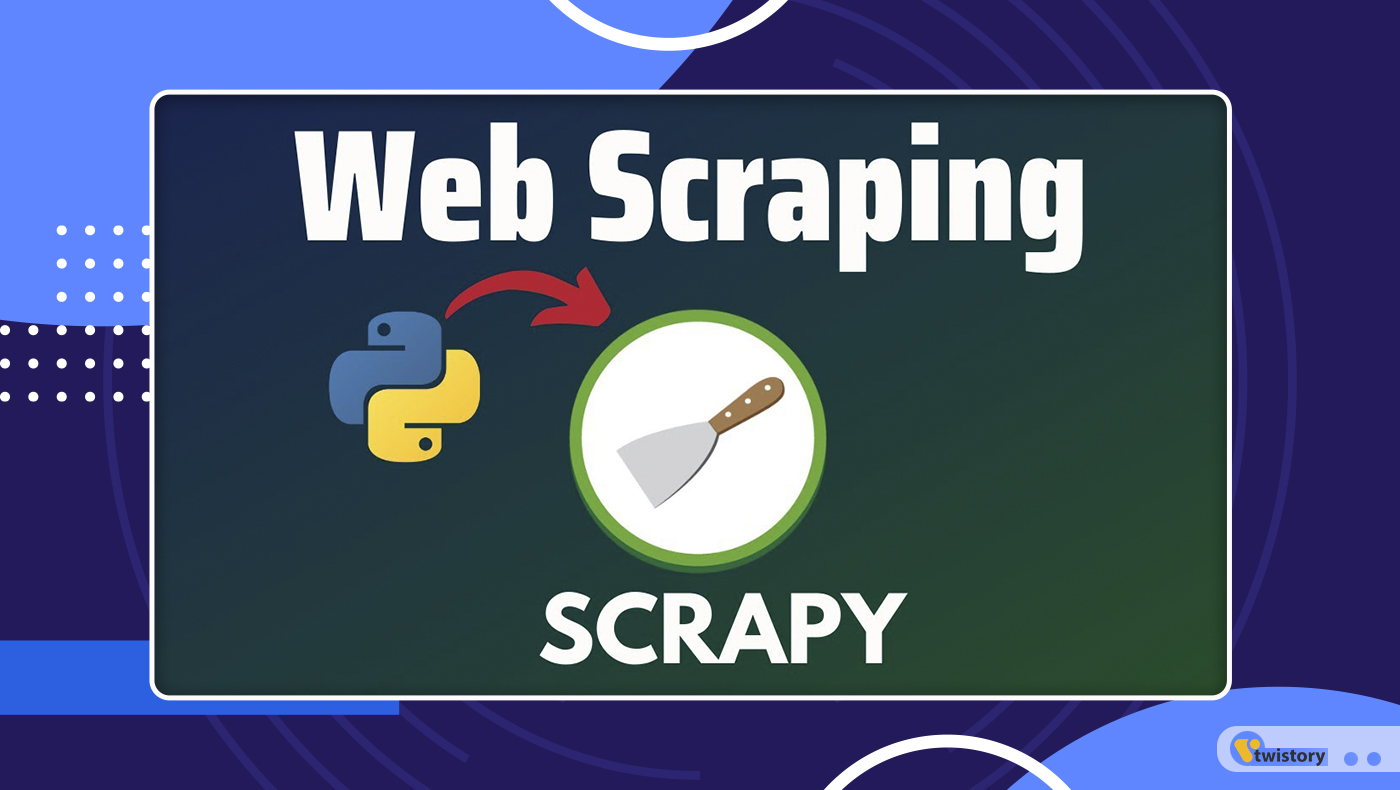
1.1 Key Features of Scrapy
- Asynchronous Request Handling: Scrapy efficiently manages multiple requests simultaneously. This feature is a game-changer for large-scale scraping, enhancing speed and efficiency.
- Middlewares and Extensions: Tailored for web scraping, Scrapy offers various middlewares and extensions. This functionality adeptly deals with cookies, redirects, form handling, and pagination, among other aspects.
- Spider Framework: Scrapy’s flexibility shines with its spider framework, enabling users to define their specific scraping methodology for websites or groups of sites.
- AutoThrottling: Scrapy’s AutoThrottle extension is intelligent. It assesses both the load on the Scrapy server and the targeted website, adjusting crawling speeds to avoid overwhelming server resources.
1.2 Advantages of Using Scrapy
- User-Friendly Documentation: Scrapy comes with clear, comprehensive guides, making it accessible for users.
- No Additional Dependencies Required: For non-JavaScript tasks, Scrapy operates independently without needing extra tools.
- Suitable for Large-Scale Scraping: Its design supports extensive scraping projects without compromising on performance.
- Memory-Efficient: Scrapy’s structure is optimized for low memory usage, making it a resource-friendly option.
1.3 Disadvantages of Using Scrapy
- Limited JavaScript Handling: Scrapy struggles with scraping JavaScript-heavy sites.
- Steep Learning Curve: New users might find Scrapy challenging due to its advanced features and detailed configuration options.
2. What Is BeautifulSoup?
BeautifulSoup is a Python library that excels in extracting data from HTML, XML, and similar markup languages. It simplifies the process by utilizing tags, text, and attributes as search parameters, making the navigation and search through HTML trees a breeze. In essence, it’s a robust tool for extracting structured data from web pages with ease.
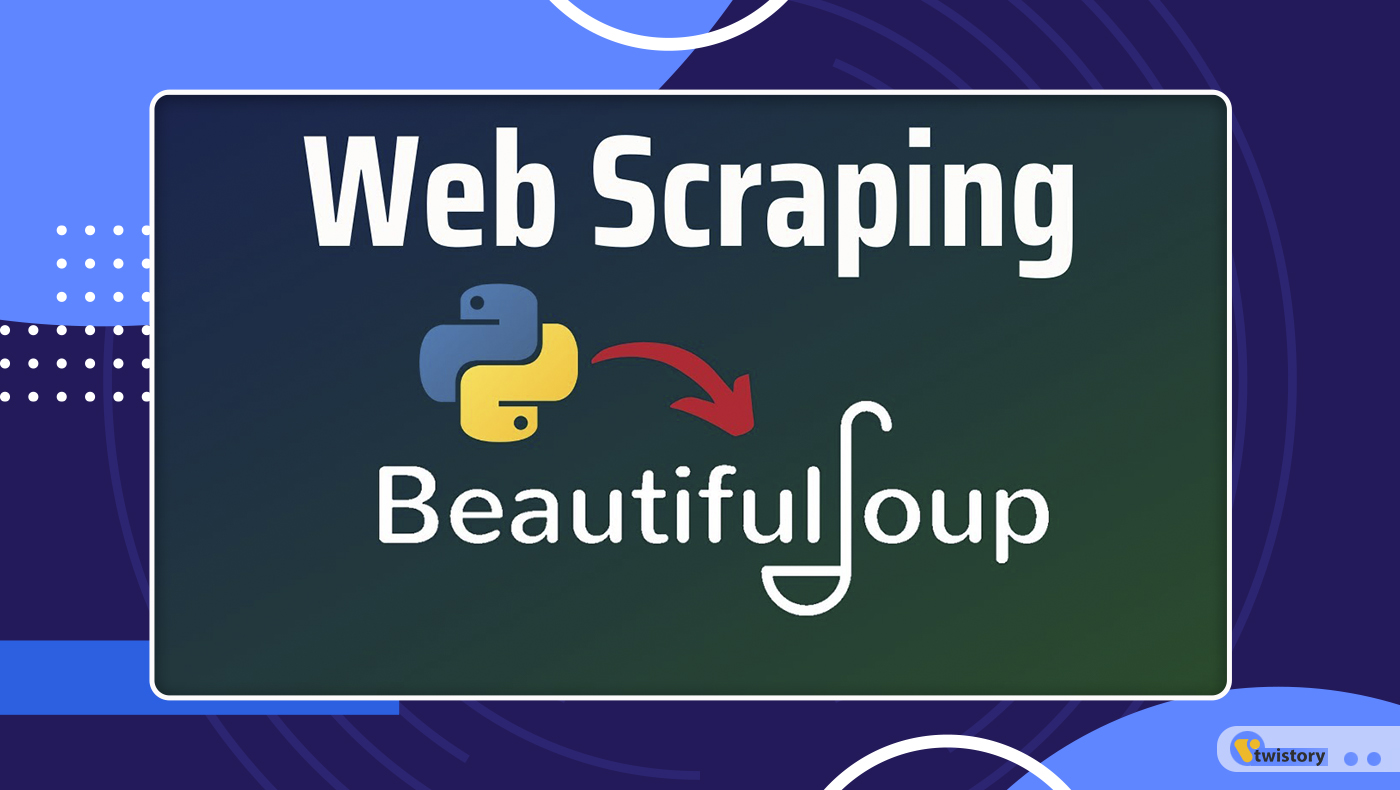
2.1 Key Features of BeautifulSoup
- Handling Poorly Formatted HTML: Beautiful Soup is quite forgiving and can parse data even from poorly structured HTML documents. For extremely messy cases, tweaking Beautiful Soup’s settings can be very helpful.
- Encoding Conversion: This library automatically detects and converts document encoding, ensuring data is in a usable format. If it doesn’t auto-detect, you have the option to set the encoding manually.
- Integration with Parsing Libraries: By working on top of parsing libraries like lxml and html5lib, Beautiful Soup offers enhanced flexibility in parsing methods.
- Excellent Error Handling: Beautiful Soup’s strength also lies in its error handling. It provides detailed error messages, making it easier to recover from parsing errors and streamlining the parsing process.
2.2 Advantages of Using BeautifulSoup
- Beginner-Friendly: Its straightforward nature makes it ideal for newcomers to web scraping.
- Open-Source and Free: Beautiful Soup is accessible to everyone, fostering a supportive community.
- Simple to Implement: Its ease of use translates to quick and efficient implementation in projects.
- Flexible Parsing Options: Offers versatility in handling different types of web content.
2.3 Disadvantages of Using BeautifulSoup
- Dependency-Heavy: Requires several dependencies, which can complicate setup and usage.
- Limited Scalability: It may not be the best fit for very large or complex web scraping tasks.
- Minimal Proxy Support: Its support for handling proxies is somewhat limited, which can be a drawback for certain web scraping needs.
3. Detailed Comparison Between Scrapy and BeautifulSoup
Choosing the right tool for web scraping often boils down to a choice between Scrapy and BeautifulSoup. Each has its own set of capabilities and limitations. A thorough understanding of how they differ will help you select the most suitable one for your project requirements.
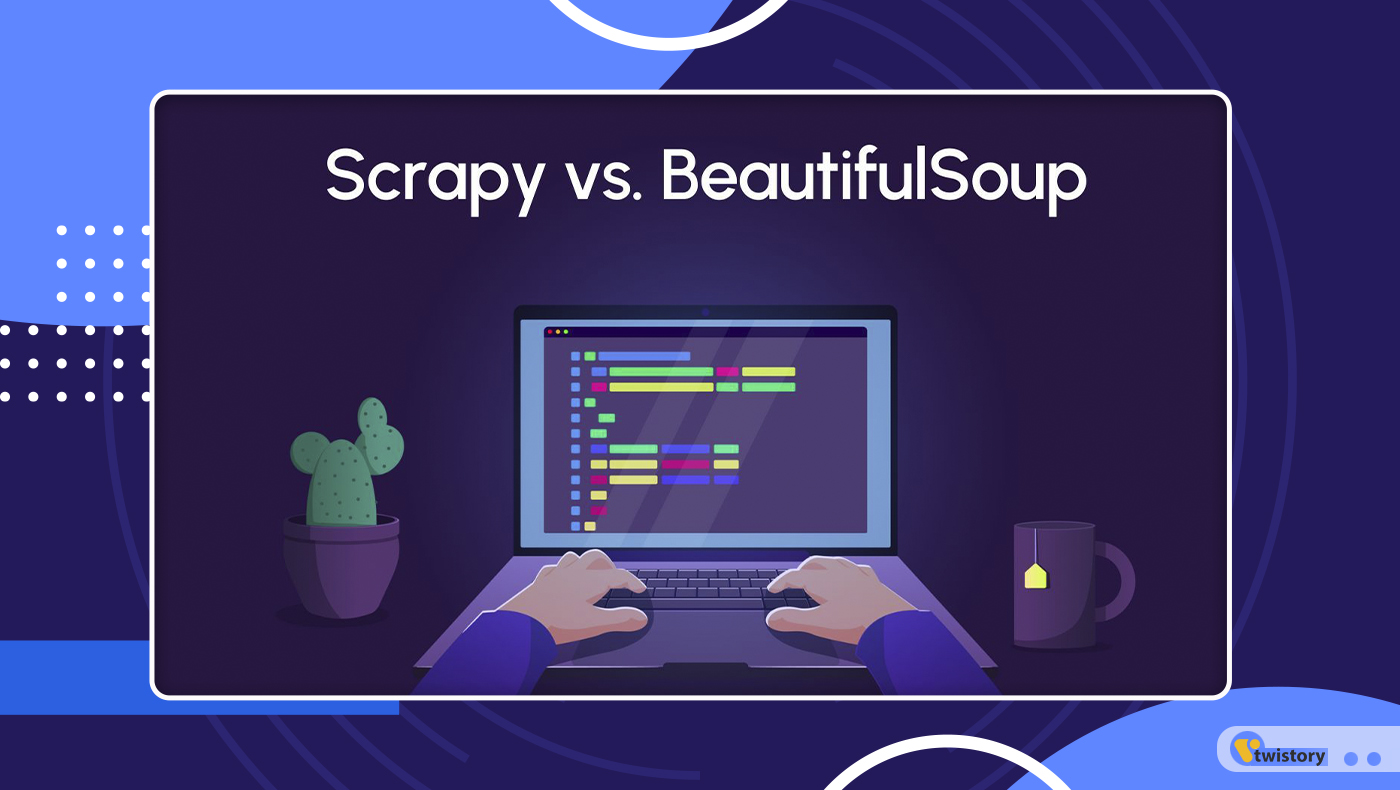
3.1 Web Data Extraction: Scrapy vs BeautifulSoup
- Scrapy: More than just a parser, Scrapy is a complete scraping framework. It supports data extraction using XPath/CSS and is ideal for systematic scraping across multiple pages or even entire websites.
- BeautifulSoup: This tool is ideal for straightforward parsing of HTML/XML. It’s user-friendly, perfect for beginners, and excels in extracting data directly from static pages.
3.2 Speed: Scrapy vs BeautifulSoup
- Scrapy: Renowned for its quick execution, Scrapy is particularly well-suited for large-scale scraping projects.
- Beautiful Soup: While providing decent speed, it is more aligned with small to medium-sized scraping tasks.
3.3 Multi-step Scraping: Scrapy vs BeautifulSoup
- Scrapy: It shines in handling multi-step scraping processes. With built-in support for form submissions, cookie/session management, and link tracking, Scrapy is better equipped for sophisticated scraping requirements.
- BeautifulSoup: Lacking in-built capabilities for complex, multi-step interactions, it requires additional programming and third-party libraries for more intricate tasks.
3.4 Proxy Rotation and CAPTCHA Handling: Scrapy vs BeautifulSoup
- Scrapy: Provides more robust support against anti-scraping measures like IP bans and CAPTCHAs. Its middleware integration simplifies the process, especially in more complex scraping scenarios.
- BeautifulSoup: It doesn’t offer native solutions for anti-scraping techniques like CAPTCHA. Users often need to manually integrate it with other services to handle such challenges.
4. Can Scrapy and BeautifulSoup Be Used Together?
Integrating Scrapy and Beautiful Soup can be a powerful combination for web scraping projects, though it does require some setup time. While Scrapy comes equipped with its own parsing capabilities, leveraging Beautiful Soup within a Scrapy framework can enhance the parsing process significantly.
In practice, within the callback functions of Scrapy, Beautiful Soup can be employed for extracting particular elements or even for altering HTML content. This is particularly useful in scenarios where you’re dealing with disorganized HTML or when the parsing requirements are more complex. Beautiful Soup’s intuitive parsing abilities can simplify these challenges within the robust framework of Scrapy.
5. Scrapy vs Beautifulsoup: Which One Should You Use?
In selecting the ideal web scraping tool, understanding the distinct capabilities of Beautiful Soup and Scrapy is crucial.
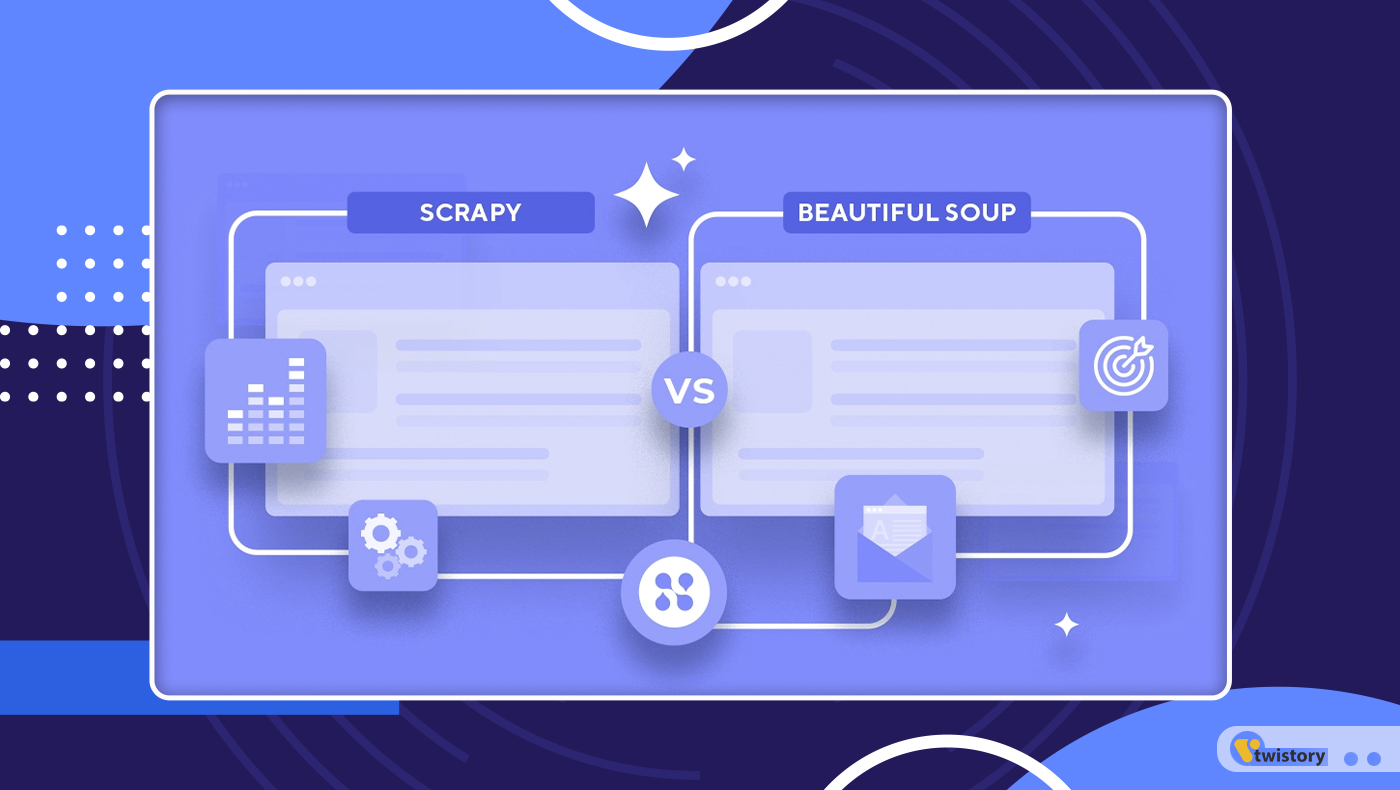
Beautiful Soup shines in its simplicity and adaptability. It’s an excellent option for extracting data from a handful of straightforward web pages, especially where there’s little risk of being blocked for scraping.
Scrapy, on the other hand, offers more power and customization. It’s the go-to choice for more extensive projects, like scraping an entire website, navigating through links, managing cookies and anti-scraping mechanisms, and exporting data in various formats.
Opt for Beautiful Soup when your project is relatively small or demands meticulous parsing on individual pages. Turn to Scrapy for larger, more complex data extraction tasks where efficiency, speed, and a comprehensive set of built-in features are paramount.
6. Conclusion
In conclusion, comparing the two web scraping tools “Scrapy vs BeautifulSoup” is an important topic for anyone learning about the world of web scraping. While both tools have their unique strengths and applications, understanding the nuances of each is key to choosing the right one for your project. Whether you opt for the simplicity and flexibility of Beautiful Soup or the power and scalability of Scrapy, your decision should align with your project’s specific needs.
For more insights and detailed guides on web scraping and other tech topics, don’t forget to explore more blogs from Twistory. We’re here to help you stay informed in the ever-evolving technology landscape with ease and confidence.
